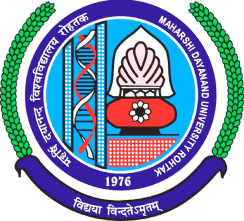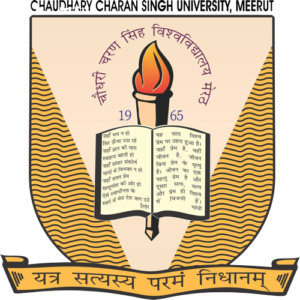X-Ray Technician Course Admission Process In Best Colleges from India: Eligibility Criteria, Scope, Syllabus, Duration, and Career Opportunities
X-Ray Technician Course: Overview
Key Components of the Course
Curriculum:
- Radiographic Physics: Understanding the principles of X-ray production and the physics underlying imaging technology.
- Anatomy and Physiology: Studying human anatomy and how various systems function to accurately position patients and capture images.
- Radiographic Procedures: Learning about different imaging techniques, including chest, abdominal, and skeletal X-rays.
- Patient Care and Safety: Emphasizing the importance of patient interaction, comfort, and safety measures to minimize radiation exposure.
- Radiation Protection: Understanding protocols and regulations for ensuring safety for both patients and technicians.
Hands-On Training:
- Supervised clinical rotations in hospitals or imaging centers.
- Direct experience in patient positioning, equipment operation, and image processing.
Certification and Licensing:
- Many regions require X-ray technicians to obtain certification and licensure. The course often prepares students to sit for relevant certification exams, which may include written and practical components.
- Many regions require X-ray technicians to obtain certification and licensure. The course often prepares students to sit for relevant certification exams, which may include written and practical components.
Duration:
- The duration of the X-Ray Technician Course can vary, but it generally lasts from 6 months to 2 years, depending on whether it’s a diploma or degree program.
- The duration of the X-Ray Technician Course can vary, but it generally lasts from 6 months to 2 years, depending on whether it’s a diploma or degree program.
Career Opportunities:
- X-Ray Technician
- Radiologic Technologist
- Imaging Specialist
- Hospital Radiographer
Importance of the Course
- Healthcare Impact: X-ray technicians are vital in diagnosing medical conditions, guiding treatment decisions, and contributing to patient care.
- Technological Advances: With advancements in imaging technology, including digital radiography and fluoroscopy, the role of X-ray technicians continues to evolve, offering new challenges and learning opportunities.
- Job Security: The demand for radiologic technologists is expected to grow due to the increasing need for diagnostic imaging services, ensuring stable job prospects for graduates.
Eligibility Criteria for Diploma in X-Ray Technician Course
The eligibility criteria for pursuing a Diploma in X-Ray Technician course may vary slightly depending on the institution.
1. Educational Qualification
- 10+2 Completion: Candidates must have completed their higher secondary education (10+2) or an equivalent examination.
- Science Stream: A background in the Science stream is typically required, with subjects like Physics, Chemistry, and Biology being essential.
2. Minimum Percentage
- Many institutions require candidates to have a minimum aggregate percentage of around 50% to 60% in their 10+2 examinations. This requirement may vary based on the specific college.
3. Age Limit
- Some institutions may have an age limit, generally between 17 to 25 years at the time of admission. However, this can vary, so it’s advisable to check with specific colleges.
4. Entrance Examination
- Some colleges may conduct their own entrance exams to assess candidates’ knowledge in relevant subjects. Some institutions may also accept scores from national or state-level entrance exams.
5. Medical Fitness
- A medical fitness certificate may be required to ensure candidates are physically fit for the course and its practical components.
Admission Process for Diploma in X-Ray Technician Course
1. Research and Selection
- Identify Institutions: Research various colleges and universities that offer the Diploma in X-Ray Technician program. Consider factors such as course curriculum, faculty, infrastructure, and placement opportunities.
2. Application Form
- Obtain the Application: Download or collect the application form from the institution’s website or admission office.
- Complete the form: Fill out the application form with accurate personal and academic information.
3. Document Submission
- Academic transcripts (10th and 12th grade)
- Identity proof (such as an Aadhar card or passport)
- Passport-sized photographs
- Medical fitness certificate (if required)
4. Entrance Examination
- Entrance Exam: Many institutions conduct entrance examinations to assess candidates’ knowledge in science subjects and general aptitude.
- Prepare: Prepare for the exam using relevant study materials and practice papers.
5. Merit List
- Result Announcement: After evaluating entrance exam scores and interviews (if applicable), institutions typically publish a merit list of selected candidates. This list may be posted on the institution’s website or communicated directly to candidates.
6. Document Verification
- Verification Process: Candidates who are selected must undergo a document verification process, where original documents are checked against submitted copies.
7. Fee Payment
- Admission Fee: Once document verification is complete, candidates will need to pay the admission fee to secure their seat in the program. Details regarding payment methods and deadlines will be provided by the institution.
Syllabus of Diploma in X-ray Technician Course
The syllabus for the Diploma in X-ray Technology is given below:
First Year | Second Year |
Human Anatomy and Physiology | Radiodiagnostic result correlation |
Basics of Radiotherapy | Clinical Hematology, Chemistry, and Urinalysis |
Radiographic Techniques and Diagnostic | Diagnostic Radiography |
Electrocardiography | Radiographic Techniques |
Radiography: Patient Care and Hospital Practice | Basic Physics |
Radiodiagnostic Radiography Equipment | Radiographic Image Acquisition. |
Scope and Career Opportunities as an X-Ray Technician
Scope of the X-Ray Technician Profession
Growing Demand:
- The demand for X-ray technicians is increasing due to the rising prevalence of chronic diseases that require diagnostic imaging. This trend is fueled by an aging population and the need for regular health screenings.
- The demand for X-ray technicians is increasing due to the rising prevalence of chronic diseases that require diagnostic imaging. This trend is fueled by an aging population and the need for regular health screenings.
Technological Advancements:
- Innovations in radiology, such as digital imaging and fluoroscopy, are enhancing the quality of diagnostic services. X-ray technicians can specialize in these advanced techniques, broadening their skill set.
- Innovations in radiology, such as digital imaging and fluoroscopy, are enhancing the quality of diagnostic services. X-ray technicians can specialize in these advanced techniques, broadening their skill set.
Diverse Work Settings:
- Hospitals
- Outpatient clinics
- Diagnostic imaging centers
- Private practice offices
- Research facilities
Potential for Specialization:
- Professionals can pursue specializations in areas such as computed tomography (CT), magnetic resonance imaging (MRI), and mammography, which can lead to advanced career opportunities and higher salaries.
- Professionals can pursue specializations in areas such as computed tomography (CT), magnetic resonance imaging (MRI), and mammography, which can lead to advanced career opportunities and higher salaries.
Career Opportunities
X-Ray Technician:
- Performing X-ray examinations, operating imaging equipment, and ensuring patient safety during procedures.
- Performing X-ray examinations, operating imaging equipment, and ensuring patient safety during procedures.
Radiologic Technologist:
- Conducting a variety of imaging techniques beyond X-rays, including CT scans and MRIs, to assist in diagnosis.
- Conducting a variety of imaging techniques beyond X-rays, including CT scans and MRIs, to assist in diagnosis.
Radiation Therapist:
- Working closely with oncologists to administer radiation treatment to patients, requiring additional training in radiation therapy.
- Working closely with oncologists to administer radiation treatment to patients, requiring additional training in radiation therapy.
Diagnostic Imaging Specialist:
- Focusing on specific imaging modalities, providing expert knowledge and technical skills in a specialized area.
- Focusing on specific imaging modalities, providing expert knowledge and technical skills in a specialized area.
Lead X-Ray Technician or Supervisor:
- Taking on supervisory roles, managing staff, and overseeing imaging departments in healthcare settings.
- Taking on supervisory roles, managing staff, and overseeing imaging departments in healthcare settings.
Educator or Trainer:
- Teaching future X-ray technicians in academic settings or conducting training sessions for new staff in hospitals.
- Teaching future X-ray technicians in academic settings or conducting training sessions for new staff in hospitals.
Quality Assurance Technician:
- Ensuring that imaging equipment is functioning properly and that protocols for patient safety and image quality are followed.
- Ensuring that imaging equipment is functioning properly and that protocols for patient safety and image quality are followed.
Clinical Researcher:
- Participating in research studies that explore new imaging techniques or the efficacy of radiological procedures.






























